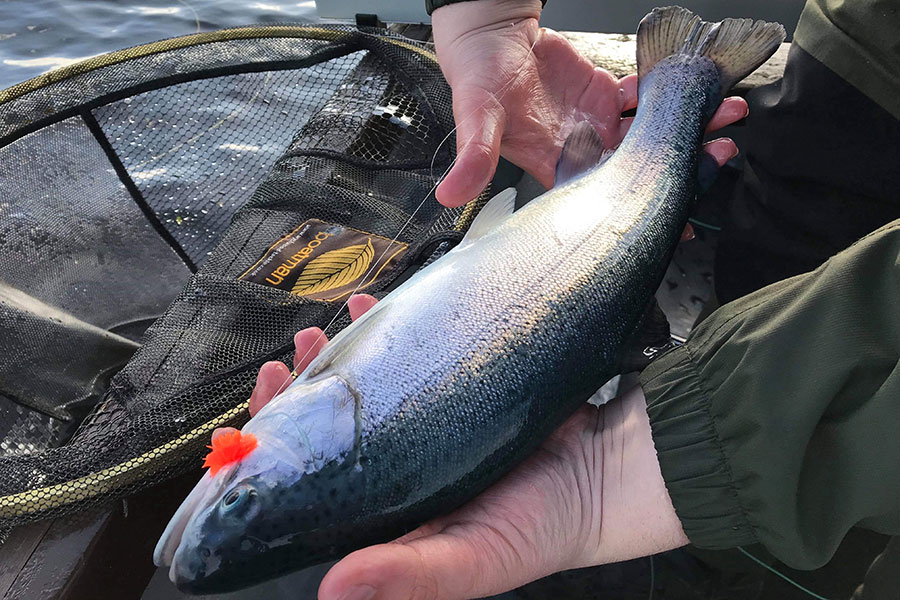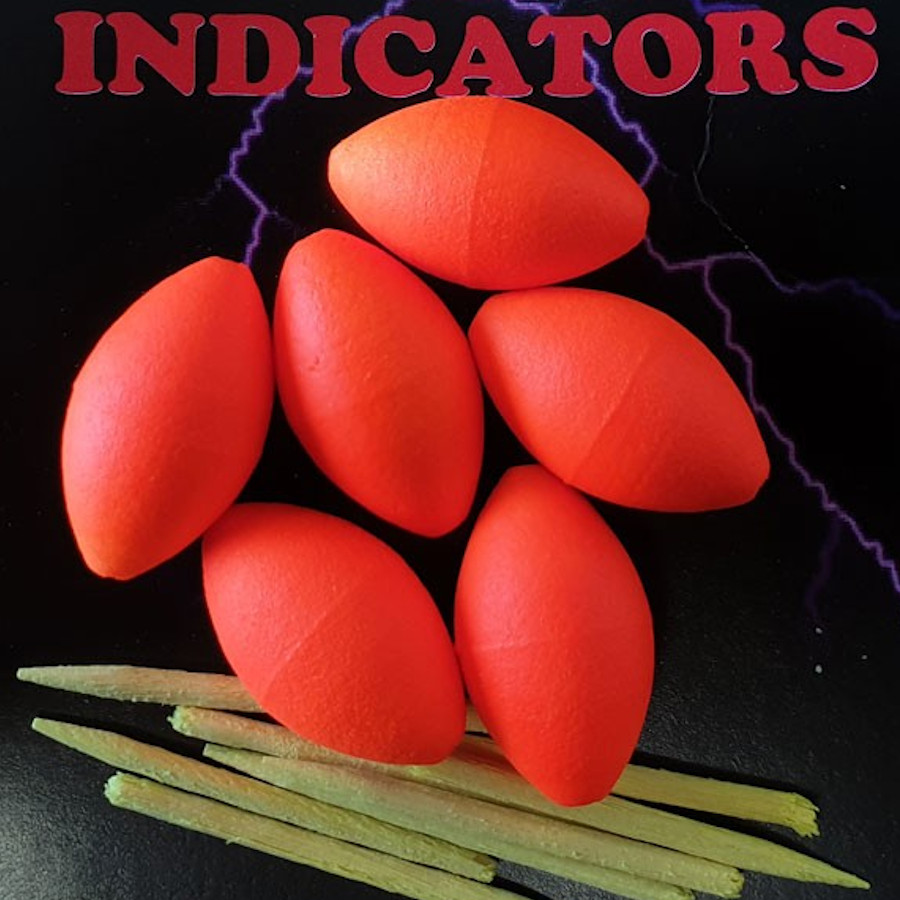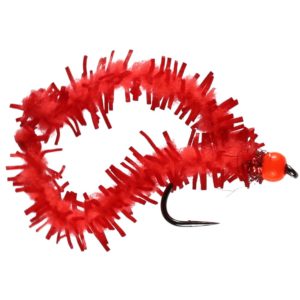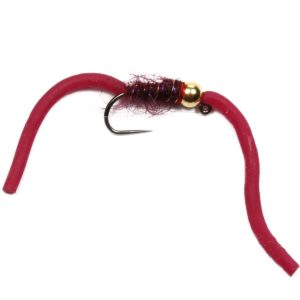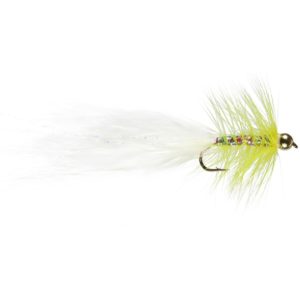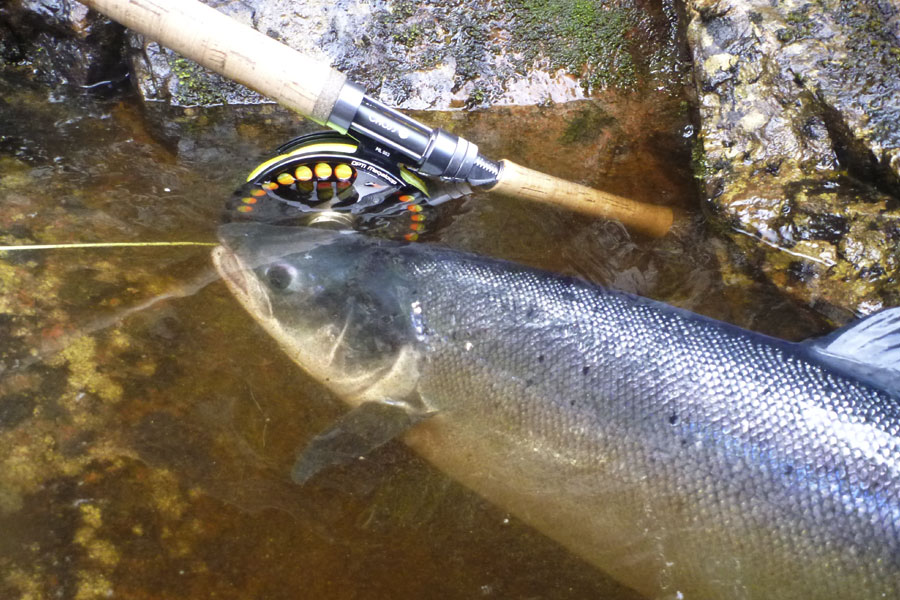January can be a very challenging fishing month; insect life becomes very sparse, underwater vegetation has died back and water temperatures have dropped significantly. These are just some of the main obstacles we have to endure as fly anglers.
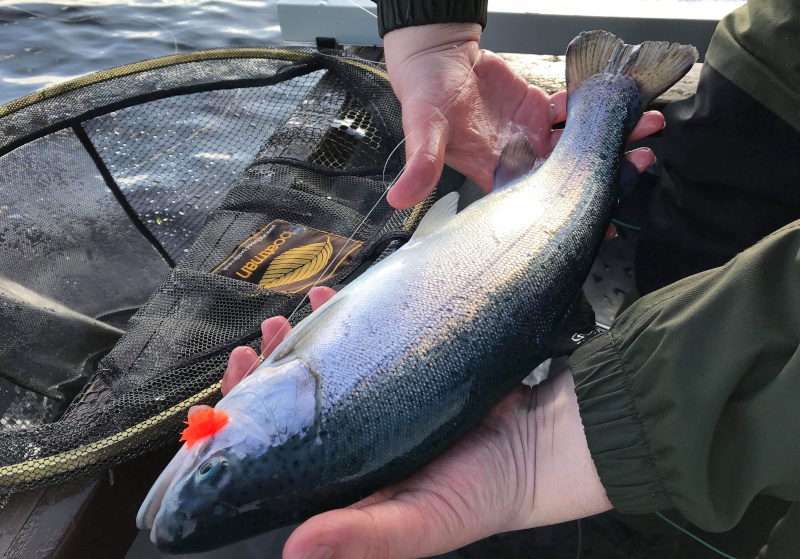
During the month of January, trout can become quite lethargic due to the drop in water temperatures, so presenting a fly at the right depth is key to your success.
In this article, we will be going through our go-to fly choices, how to fish them and how to tempt those lethargic winter rainbows.
The best trout flies to use in January are black and green or yellow and white lures and a variety of weighted nymph variations such as apps worms, squirmy wormy. Working these style of flies slowly or with a static presentation can work best.
Location Is Key!
With water temperatures at their coldest, features such as deep drop-offs and rock-based structures are good starting points. Both these areas will hold shoals of prey fish making them likely trout holding areas at this time of the year.
Other key areas are the margins, by midday these areas will have risen in temperature by up to a degree. This minor change can be enough to encourage trout into these areas to take advantage of these warmer areas.
Aerators on smaller still waters are another key area, the flowing and oxygenated water is a magnet for trout at most times of the year.
Don’t overlook the wind direction either, a wind pushing towards the bank can push the remaining or limited food source up towards the bank’s margin. This, in turn, can move trout into the margins making them key areas to target.
A pair of polarised glasses will help you to see into the water and identify fish holding features to target.
Top tip: Look for shallow bays that may be exposed to long periods of sunshine as these bays will warm up quicker than any other shallow areas.
Recommended Set Up
Rods between 9ft6″ – 10ft in length and a line weight rating of #7 to #8 will be perfect for the job in hand. Fly Lines vary from full floating lines to fast intermediates.

Below we highlight the trout flies we would use in conjunction with specific techniques to target trout in various levels of the water column.
Bung
The bung is when a fly or team of flies are presented statically under a buoyant indicator. This method allows you to suspend a fly or flies at a predetermined depth. The bung is a great method for targeting very lethargic or inactive fish.

Fish the bung on a full floating line. This will ensure the floating indicator stays afloat and it also allows you to set the hooks easier, as there is no resistance on the line.
There are two styles of bungs, a sliding bung and fixed bung. Below, we have a quick look at the pros and cons of both:
Sliding bung
Pros: Allows you to vary the depth throughout the day without having to retie your full cast.
Cons: A sliding bung does not contain a hook, so you may miss fish opportunities if a trout comes up and attempts to take the bung.
Fixed bung
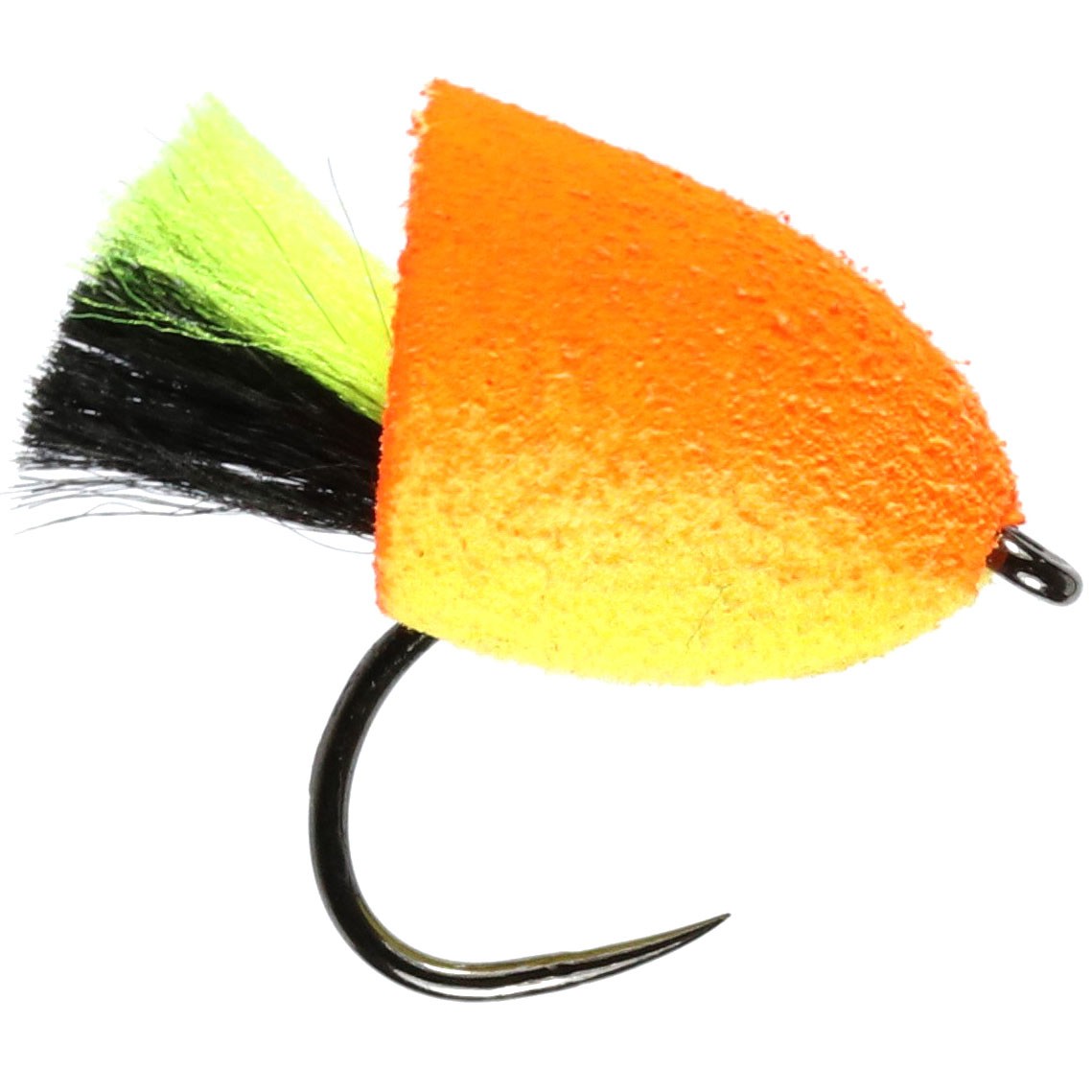
Fixed Bung
Pros: Using an indicator fly can increase your chances of the opportunistic trout that fancies a fly on the surface.
Cons: You are forced to retie your leader if you want to change the depth that you’re fishing.
Top Tip: If you are new to fly fishing we would recommend starting out with a one fly setup.
Click here to view our full range of bungs and indicators.
Bung Retrieves
You want to move the bung as little as possible. Allow it to move naturally over the water. The whole concept behind the bung is to provide a static fishing approach.
You can fish the bung in an area as long as you want. We do recommend that you cover the swim in a fan-like shape to ensure you’re covering water efficiently. After you have covered the whole area of water try adjusting your depth and repeat the process until you find the depth the fish are likely to be holding.
Leader Material
A fluorocarbon leader of 6 – 8lb is perfect for implementing into your bung method. Keep your leader length between 10 to 12ft.
Top tip: Ensure you have a space of about 2-3ft from your braided loop to your bung. This will help with better presentation and ensure the flies turnover more elegantly. If the bung is to close the braided loop the fly turnover will be very aggressive and it will affect overall presentation.
Recommended Flies
- Chewing Gum Nymph
- Squirmy Wormy
- Shrek Egstasy
- Cat Bungee
Worm patterns, such as squirmy wormy’s are an ideal starting point. These flies naturally move in the water even when in a near static position, making it an ideal fly to fish on the ‘bung’ method.
The other advantage of a squirmy wormy is the elasticated legs allow trout to investigate a fly without spooking them as they mouth at the oversized legs associated with the fly.
Egg flies and cat bugs are also good alternative flies to use. Eggs offer a soft texture that allows hesitant trout mouth the fly before committing to a take. While the Cat bug has built a reputation as a classic bung fly.
Worm Imitations
If the static approach is not working for you, then implementing a slow-moving fly presentation could be the required technique for the day.
Swap out the floating line out for an intermediate line and try to induce a take with a slowly retrieved worm pattern.
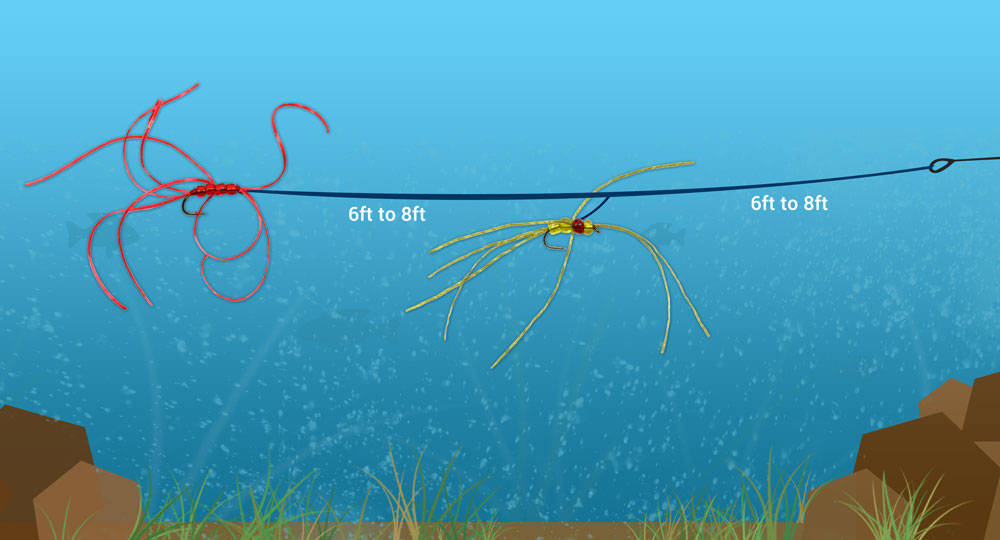
Worm patterns provide an illusion! They are small in size but produce a large profile in the water thanks to their front and back legs. Not only that, worm patterns tend to have long legs that can create plenty of movement in the water even on the slowest of retrieves.
Leader Material
A fluorocarbon leader of 8-10lb would be our go-to choice of leader breaking strain. Keep your leader length between 12 to 18ft for a two fly setup. Ensuring your flies are equally spaced.
Recommended Flies
When it comes to a fly choice, we recommend the apps worm. This unorthodox pattern can be worked at the slowest of speeds whilst still creating a lot of movement in the water.
Try fishing two apps worms together in contrasting colours, so a red apps worm on the point and either an olive or orange pattern as the top fly.
- Olive Apps/Quad Bead Worm
- Red Quad Bead Worm /Apps Worm
- Chewing Gum Nymph
Apps Worm Retrieves
Work the worms with a slow figure of eight retrieve. To trigger a reaction strike, randomly throw in some short snap pulls. This will allow the worms legs to pulsate through the water. The slower the retrieve the deeper you can keep the running depth of the flies.
Lures
During this time of the year it’s good to fish some big and vibrant flies. The increased fly size not only provides a bigger profile but presents an easier target for trout to hone in on. Trout lures have a tendency to move a lot of water when retrieved due to their oversized tails and body hackles. These can be the elements required to provoke a take from a lethargic winter fish.
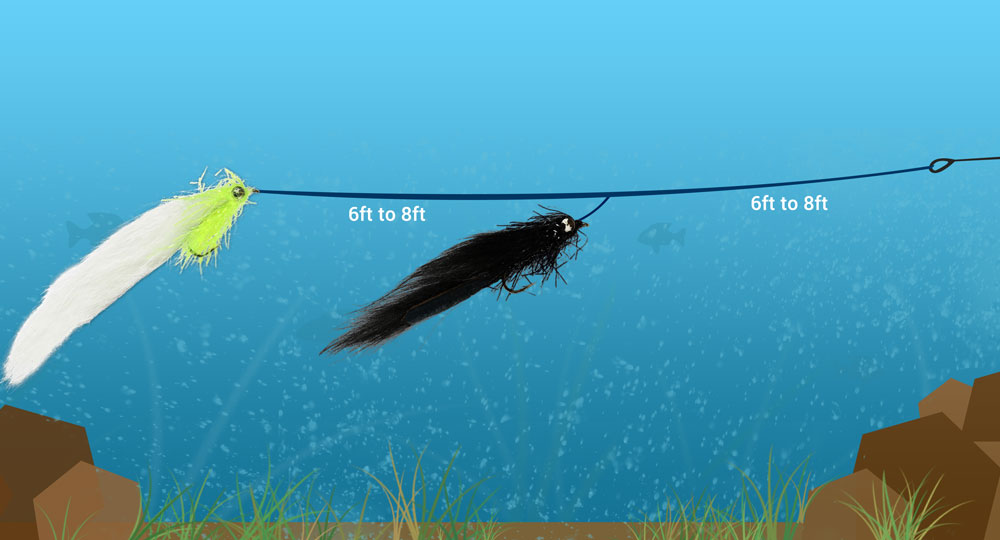
As for fly line density, opt for a fast intermediate line with a 1 or 2 fly setup. This will allow you to target the deeper areas of a fishery with a variety of retrieval techniques. We recommend a two fly setup, with a black fly on the top and a contrasting white and yellow fly on the tip.
The contrasting flies allow you to cover two different colour options. This will increase your chances of connecting with a fish.
Click here to view our range of trout lures.
Lure Retrieves
Opt for a slow figure of eight to get down to your optimum depth. If the slower retrieve does not work, change the retrieve. Don’t be scared to strip the line very quickly or even integrate a roly-poly retrieve. We are aiming to provoke a strike by limiting the trout’s time to think and the fast retrieve that we opt for in this technique allows us to do so.
The retrieve might be the trigger on the day so it’s worth experimenting with various retrieval speeds.
Leader Material
Larger flies require a stiff fluorocarbon leader, this helps turn them over and provide a better presentation. A 10-12lb breaking strain fluorocarbon is suited to the job. The stronger leader is also beneficial when targeting larger trout that have been feeding all autumn on fry.
Recommended Flies
- White Bunny Leech
- Yellow Dancer
- Crafty Black Cat
Conclusion
Hopefully, after reading this article, you can experiment with our 3 suggested techniques. These will provide you all the tools that you require for targeting those winter stillwaters. To be more efficient in your fishing approach, we recommend carrying three different rod setups so you’re not wasting valuable fishing time chopping and changing lines and flies.

